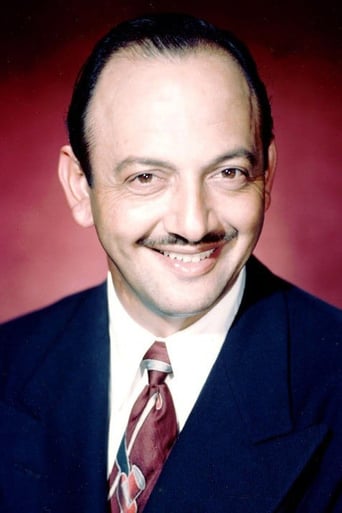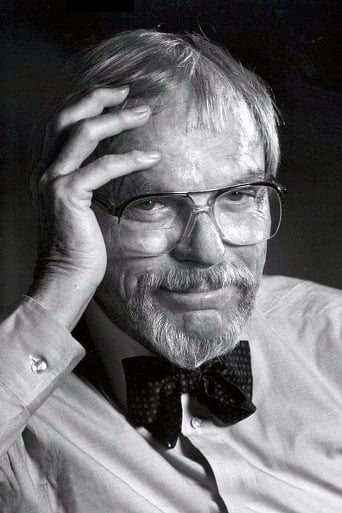Horst in Translation ([email protected])
Warner Bros' "You Ought to Be in Pictures" is what Daffy tells porky in this mix of live action and animation we have here. But of course, Daffy wants Porky's place and Porky, naive as he is, believes him right away. This film runs a couple seconds under 10 minutes, so it is 3 minutes longer than these films usually are. It is in black-and-white and the most interesting thing here for me was not really the slapstick comedy, but how they mixed live action and animation. As a result of this we have the only acting credit for the influential Leon Schlesinger, who plays himself in here. And the funniest thing about it is how it actually turned out so true. Poor Porky. His star was fading quickly, even if he stayed somewhat relevant for a long time still. But the stardom of (Bugs and) Daffy is something he never managed to achieve. I feel kinda sorry for him. This film has its good and bad moments, but overall it's a really interesting take in terms of film on film. I recommend it. Oh yeah the voice acting is strong too of course, but that's a given with Mel Blanc on board I guess.
phantom_tollbooth
Friz Freleng's 'You Ought to be in Pictures' is a brilliant, atypical Warner Bros. cartoon. Beautifully combining animation and live action film (only Porky Pig, Daffy Duck and Porky's car are animated), it stars many of the Warner staff, including Leon Schlesinger who, despite playing himself, manages to be hammier than the pig he's acting opposite! While the animators at the Warner Bros. studio are out at lunch, the newly drawn Daffy Duck convinces the newly drawn Porky Pig that he deserves better than a career in animation and sets him on his way to seeking a starring role in the movies. His motives, of course, are to get rid of Porky so that he can take his place as Warner's big star. An early glimpse of the greedy, narcissistic version of Daffy (as opposed to the crazy version of Daffy more commonly seen in these early black and white shorts), this is also another clear case of Daffy stealing the cartoon, something that would lead to life imitating art as Daffy really did replace Porky as Warner's most popular star. Porky's trip to a movie studio and his high speed chase through the streets to get his job back make 'You Ought to be in Pictures' seem more epically expansive than the average short of this era and the interaction between real life and animation is surprisingly smooth for such an early example of the two mediums coexisting. All in all, 'You Ought to be in Pictures' is a fascinating, entertaining short which is extremely easy to love. Ironically, having achieved his aim of replacing Porky as a comedy star, Daffy would be complaining of being typecast as a comedy player just ten years later in Chuck Jones's 'The Scarlet Pumpernickel'. There's just no pleasing some ducks!
MartinHafer
This is a really cool cartoon. It begins with Daffy trying to convince Porky that he's too good to remain with Looney Tunes and he should try for bigger things! So, Porky walks out of the cartoon and into real life--similar to what you later saw in WHO FRAMED ROGER RABBIT. Porky first goes to Looney Tunes chief, Leon Schlessinger, and asks if he can have his contract. Mr. Schlessinger agrees and Porky is now a free agent. However, he finds that life outside of cartoons is a lot tougher than he thought and he finally returns to Mr. Schlessinger to beg for his job back! This cartoon is so inventive and shows so much behind the scenes material that it is a must for old movie buffs. A delightful film and way ahead of its time.
wmorrow59
I remember discovering this cartoon on TV when I was a kid, back when they still showed black & white Looney Tunes regularly, and even as a youngster I recognized it as something special. In the '80s I managed to get a copy on VHS and practically wore it out with re-plays; it's one of those miraculous little films you can go back to again and again, one that retains its charm and its ability to make you laugh no matter how many times you've seen it. If anything, I enjoy it even more as a grown-up, having come to appreciate the inside jokes about Hollywood, cartoon producer Leon Schlesinger, and the legendary "Termite Terrace" facility, seen here at the height of its glory days.It's clear from the opening shot that this is no ordinary cartoon; in fact, it's primarily a live action short filmed on the Warner Brothers lot, featuring actors playing studio personnel. (Amusingly, almost every person we see aside from Schlesinger has his voice dubbed by Mel Blanc, which is not only a great inside joke but makes the humans come off like cartoon characters themselves.) After the animators have gone to lunch Porky Pig comes to life on his drawing board, just like Max Fleischer's Koko the Clown did in the '20s, and so does Daffy Duck, who initially addresses Porky from a portrait on the wall. Daffy urges his colleague to quit cartoons and go for a job in features playing opposite Bette Davis. Pushed by Daffy, Porky quits, and his confrontation with the boss makes for a memorable and oddly poignant scene. Schlesinger, an affable-seeming guy who looks a little uncomfortable playing himself, agrees to release him from his contract. After Porky's gone, however, the producer turns to the camera and addresses us with hard-bitten wisdom: "He'll be back!"Predictably enough, Porky's venture into the real world of studio system film-making is a disaster. He is belittled and chased by a hostile security guard, sneaks onto a sound stage but ruins a take, and when he tries to flee he blunders into a Western set and is pursued by stampeding horses (a great effect, and a comic high point). Daffy, meanwhile, has been trying to hassle a visibly irritated Schlesinger into giving him Porky's former position. Porky returns to Termite Terrace in the nick of time, gets his old job back, and rewards Daffy with a vigorous beating. Thus, order is restored.As a kid I didn't catch all the references to Errol Flynn, Frank McHugh, or Greta Garbo, although I certainly got the joke when Porky tries to sneak into the studio disguised as Oliver Hardy. Still, viewers don't have to be hardcore film buffs to appreciate the comedy. The animated elements in You Ought To Be in Pictures have a fascinating look, achieved by laying down cell artwork (representing Daffy, Porky, and Porky's car) on still photographs of the office, the studio, and other "real world" locations. This is inter-cut with live action scenes, but on several occasions the cartoon characters interact with the human ones, as when Porky shakes hands with Schlesinger, or, later, drives like a maniac through midtown traffic. There's an especially startling bit when the studio guard hoists Porky and his car into the air and flings them off the lot These effects may look rudimentary by today's standards, but they pack more humor and pizazz into each frame than a lot of the technically adept but soulless CGI work produced nowadays.This is a great piece of work, and if you're a movie buff with a fondness for old time Hollywood it's guaranteed to make you happy.




